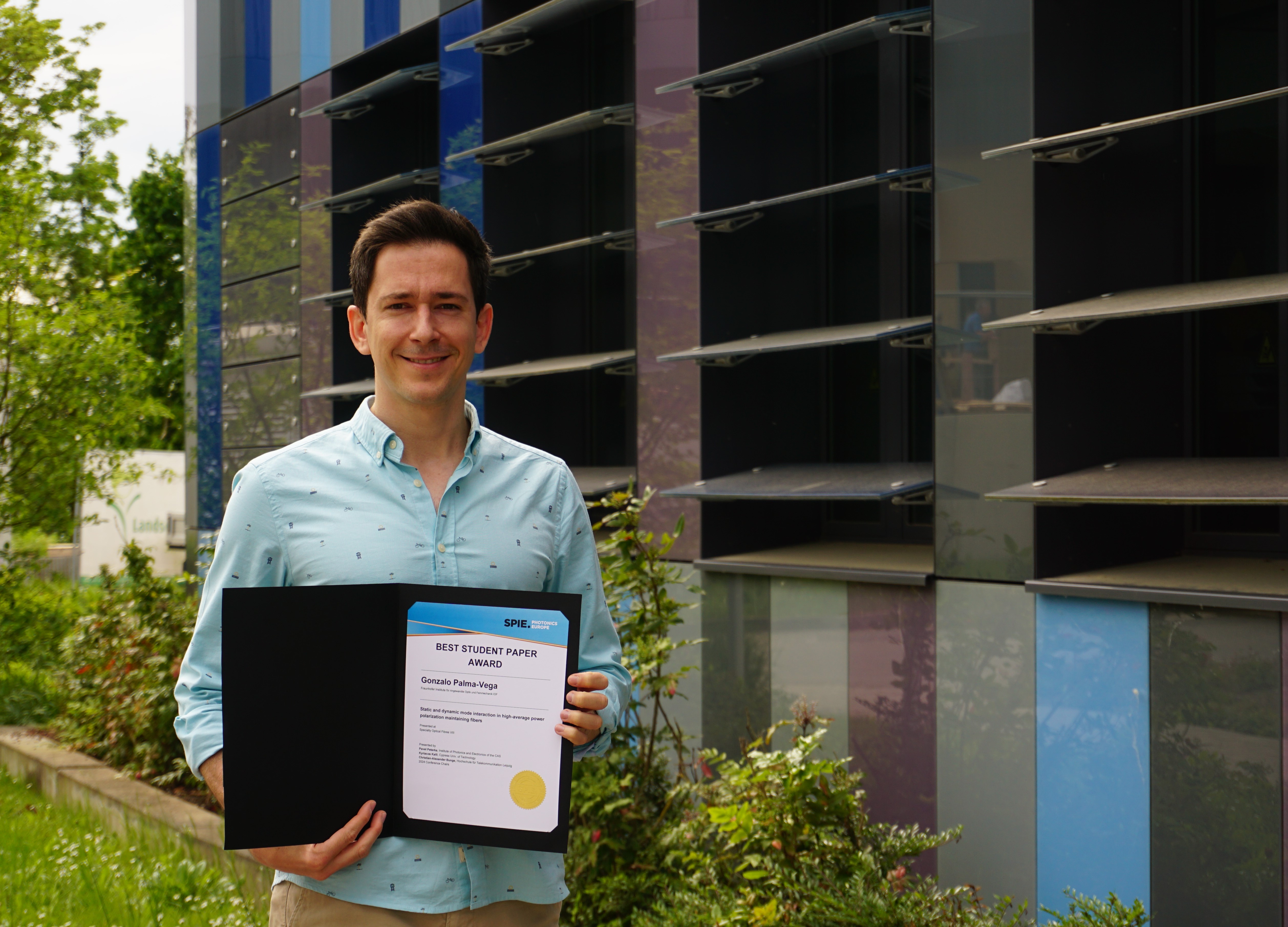Jena (Germany) / Straßburg (France) | May 23, 2024
SPIE Photonics Europe: PhD student from Fraunhofer IOF receives "Best Student Paper Award" in Strasbourg
Great success at SPIE Photonics Europe: The "Best Student Paper Award" in the field of laser and fiber technology was awarded to Gonzalo Palma-Vega, scientist at the Fraunhofer-Institute for Applied Optics and Precision Engineering IOF in Jena.
From April 7 to 11, 2024, Strasbourg hosted this year’s SPIE Photonics Europe, a major interdisciplinary industry event that brings together numerous players from the fields of optics and photonics. The conference presented a wide range of topics, including digital optics, quantum technologies, optical imaging, sensor technology and metrology.
Part of the international event was the sub-conference »Specialty Optical Fibres VIII«. At this event, Gonzalo Palma-Vega, a scientist at Fraunhofer IOF, presented his research work on "Static and dynamic mode interaction in high-average power polarization maintaining fibers". Thanks to his innovative research approach and the excellent quality of his presentation, he was able to convince the expert jury and was awarded the »Best Student Paper Award«.
Mode interaction in high-average power polarization maintaining fibers
In his work, Gonzalo Palma-Vega study the impact of mode interactions in polarization maintaining (PM) ytterbium-doped fiber amplifiers with high-average powers. He investigates how these interactions affect the efficiency and power scaling of the amplifier, depending on the polarization of the seed laser.
It turns out that avoided-crossings between core and cladding modes are particularly intense when the polarization is aligned parallel to the fast axis of the PM fiber. The study also explains the influence of the input polarization on transverse mode instabilities (TMI). Furthermore it could be shown that an unexpected strong deformation of the output beam occurs when the fiber is operated in the fast axis. It occurs due to a static cross-coupling between the fundamental mode in the fast axis and the first high-order mode in the slow axis, and this below the TMI threshold.
Further informationen & publikations
[1] Gonzalo Palma-Vega, et al.: "Static and dynamic mode interaction in high-average power polarization maintaining fibers", Conference 13001, Paper 13001-6 (2024). URL: https://spie.org/photonics-europe/presentation/Static-and-dynamic-mode-interaction-in-high-average-power-polarization/13001-6#_=_
[2] Gonzalo Palma-Vega, et al.: "TMI and polarization static energy transfer in Yb-doped low-NA PM fibers", Opt. Express 31, 24730-24738 (2023).
[3] Gonzalo Palma-Vega, et al.: "Mitigation of transverse mode instability by modal birefringence in polarization-maintaining fibers", Opt. Express 31, 41301-41312 (2023).
